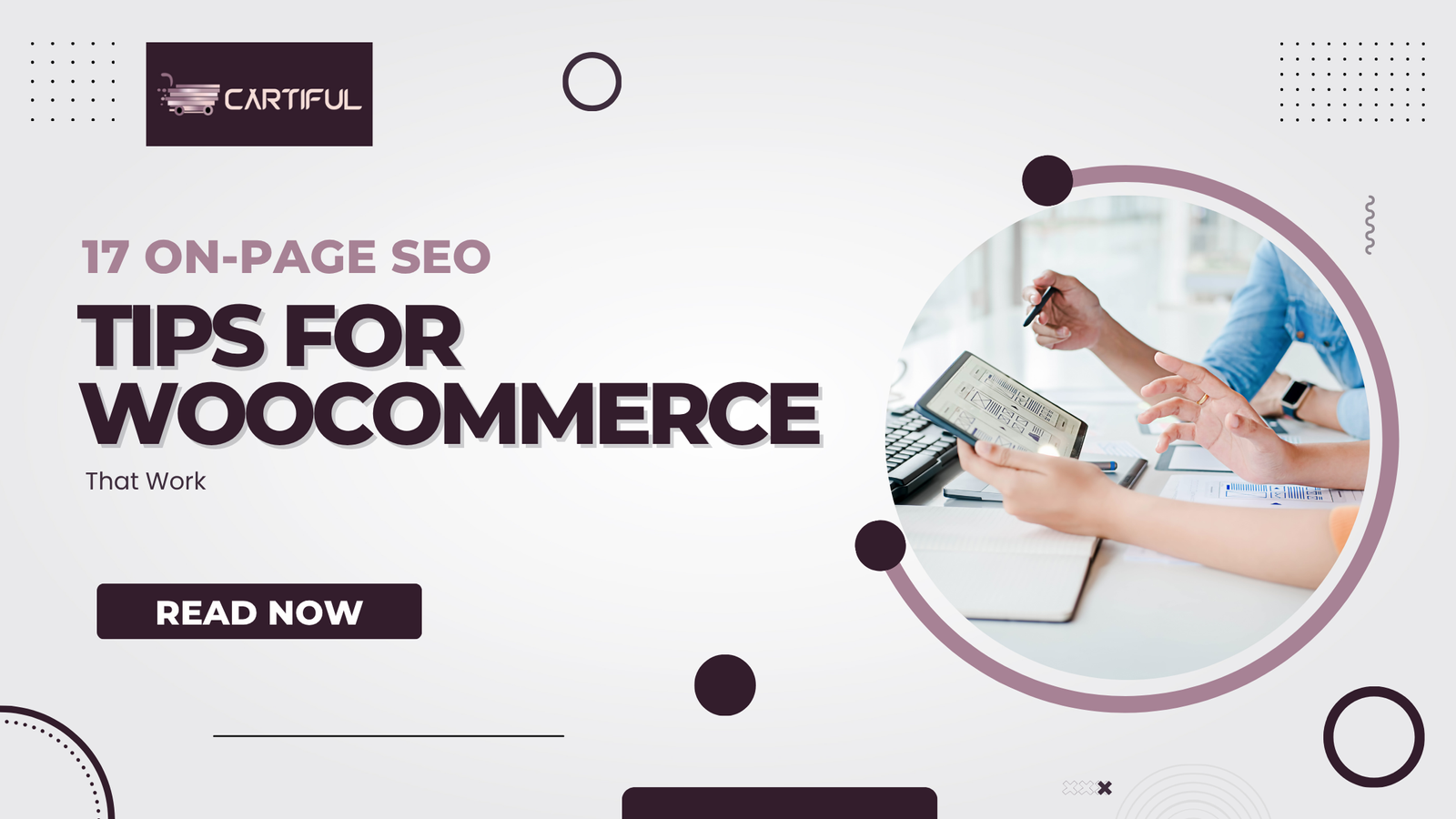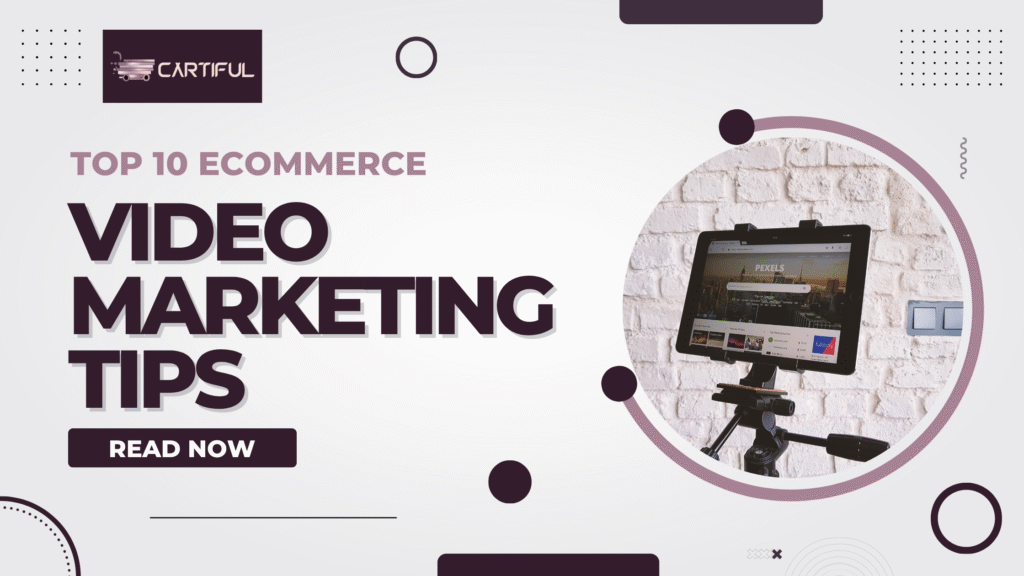With over 6 million stores built on WooCommerce, standing out in search engine results has never been more challenging. Every product page, category page, and meta detail matters because, in 2025, search engines will reward ecommerce stores that prioritize structured, fast-loading, and user-friendly content. That’s why on-page SEO for WooCommerce is essential.
From optimizing your product images and meta descriptions to refining your URL structure and adding schema markup, on-page SEO is the key to moving from page two to page one in search engine rankings. Whether you’re managing thousands of SKUs or scaling a niche WooCommerce store, these proven tactics will help boost your visibility, reduce bounce rate, and increase conversions.
Here are 17 high-impact on-page SEO strategies to help your WooCommerce store rank higher in search engines and convert more visitors into customers, starting with the foundational setup every store needs to succeed.
TL;DR
- Start with a solid foundation by choosing a lightweight, schema-ready theme, setting up clean permalinks, and installing a trusted SEO plugin, such as Rank Math or Yoast.
- Use transactional long-tail keywords and benefit-driven meta titles to attract buyer intent. Optimize HTML heading tags and product descriptions to improve structure and search visibility.
- Optimize product images and schema markup to meet Core Web Vitals and qualify for Rich Results. Fast-loading visuals and structured data both impact rankings and click-through rates.
- Improve internal linking and breadcrumb navigation to strengthen crawl paths. Link related products, buying guides, and use the FAQ schema on category pages to boost engagement and relevance.
- Resolve common technical issues, such as duplicate variants, uncompressed images, or outdated product schemas. These often block category page SEO for WooCommerce and limit overall performance.
- Track and refine your SEO efforts using tools like Google Search Console. Regularly update product content, monitor redirects, and localize for global shoppers to stay competitive.
- Cartiful helps WooCommerce brands turn underperforming pages into top-ranking assets by diagnosing weak SEO foundations, fixing what matters, and delivering the structure search engines and shoppers trust.
Why On-Page SEO Still Matters for WooCommerce in 2025?
Getting found on Google in 2025 isn’t as simple as dropping in a few keywords. With AI overviews dominating the top of search results and zero-click answers reducing traditional traffic, your WooCommerce store needs to stand out with clear, concise signals that tell search engines and shoppers exactly what you offer.
This is what transforms a well-built store into a top-ranking one: on-page SEO that works with search engines, not against them. Strong pages aren’t just well-written; they’re technically sound.
Optimized meta titles, proper schema markup, fast load times, and solid URL structure all play a part in helping your store earn better visibility.
More importantly, smart on-page work improves what really matters: traffic that converts. When your product pages load quickly, your category pages are well-structured, and your product images are properly tagged, shoppers stay longer and make more purchases.
Cartiful’s on-page strategies help ecommerce brands turn quiet stores into high-performing ones by focusing on the changes that shift rankings and drive real growth. Structure, content, speed, and schema aren’t just technical checkboxes; they’re the foundation of visibility and trust.
SEO Foundations: Set Up WooCommerce the Right Way First
Before you optimize meta tags or product images, your site’s foundation needs to be in place. Skipping these basics will cost you rankings, conversions, and long-term stability. Here’s what to lock in first:
1. Pick a Lean, Schema-Ready Theme
Not all WooCommerce themes are built for performance. Choose a theme that’s lightweight, mobile-responsive, and comes with built-in support for schema markup and structured data.
Clean code and minimal bloat make it easier for search engines to crawl your store and faster for users to browse. Look for themes that work well with Core Web Vitals and won’t break when you integrate SEO plugins or tracking tools.
2. Install a Solid SEO Plugin (Rank Math or Yoast)
A good SEO plugin is your command centre for managing titles, meta descriptions, product schema, and more.
Both Rank Math and Yoast SEO are powerful choices for WooCommerce; they help control how your pages appear in search, create sitemaps, manage canonical tags, and connect to tools like Google Search Console. Set it up early to establish a strong search foundation from day one.
3. Set Up Clean Permalinks and Canonical Tags
Your URL structure speaks to both users and search engines. Go to Settings > Permalinks and choose the “Post name” option to create clean, keyword-rich URLs.
This improves search engine rankings and avoids messy dynamic links. Then, set up canonical tags to prevent duplicate content issues, which are particularly significant for variable products and taxonomy archives in your store. Cartiful always locks these in before touching any front-end SEO work.
17 On-Page SEO Strategies to Make Your WooCommerce Store Rank and Convert
Ranking a WooCommerce store isn’t just about keywords; it’s about aligning every element of your site with how search engines actually work. From refining your HTML heading tags to tightening your internal links and optimizing product taxonomies. Effective on-page SEO for WooCommerce can transform both your visibility and performance. The tips below are built to improve your search appearance, strengthen internal crawl paths, and help your site convert, not just attract traffic.
Tip 1: Target Transactional Long-Tail Keywords
Ranking for broad terms like “jackets” won’t drive qualified traffic. Focus on long-tail, purchase-ready search terms, such as “women’s waterproof hiking jacket under 10k.” These reflect real buying intent and are far less competitive.
Use Google Search Console, Meta Tag Analyzer, or even Cartiful’s link gap analysis service to identify the queries your customers are already entering into search engines.
Tip 2: Write Click-Enticing Title Tags ≤ 60 Characters
Your meta title is your first chance to earn a click. Keep it under 60 characters, lead with the primary keyword, and communicate a benefit, like “Organic Baby Swaddle – Free Delivery in Pakistan.”
Avoid keyword stuffing and focus on conversion. Well-written Title Tags improve both search engine rankings and user engagement.
Tip 3: Create Benefit-First Meta Descriptions with CTAs
Meta descriptions should do more than explain; they should drive action. Focus on user benefits and include a call to action that reflects the product page content: “Shop premium leather belts; handmade, fast shipping.” Keep it under 150 characters. A strong description improves your search appearance and boosts CTR.
Tip 4: Use <h1> on Product Name, <h2>/<h3> for Specs
Clean HTML heading tags help search engines understand the structure of your content. Use one <h1> for the product title, then organize supporting information, such as a Size Guide or Product Tags, under <h2> and <h3>. This hierarchy improves crawlability and strengthens your on-page SEO for WooCommerce.
Tip 5: Add Unique 300-Word Product Descriptions
Using supplier-provided content creates duplicate content issues. Write original metadata and detailed, benefit-led product descriptions that include attribute terms, global attributes, and relevant product taxonomies.
Not only does this improve your WooCommerce store’s search engine optimization, but it also increases time on the page and reduces the bounce rate.
Tip 6: Optimise Product Images (WebP, ≤ 100 KB, Descriptive Alt-Text)
Heavy product images can hurt both user experience and your Core Web Vitals. Compress visuals to under 100 KB, use WebP format for faster loading, and include descriptive alt-text using relevant search terms, like “leather crossbody bag with gold chain.” This improves load speed, search appearance and boosts image SEO for your WooCommerce store.
Tip 7: Implement Product Schema (Price, Availability, Rating)
Structured data is essential for search engine optimization. Use Product Schema to define your item’s price, stock status, and average rating.
This gives search engines clear context and qualifies your listings for Rich Results, making your product pages more clickable and trustworthy.
Tip 8: Use FAQs Schema on Category Pages
Adding FAQs on category pages increases keyword coverage and improves user clarity. Wrap answers in schema markup to qualify for Google’s People Also Ask and featured snippets.
It’s a strategy Cartiful often uses to elevate category page SEO for WooCommerce and drive more qualified traffic.
Tip 9: Internally Link Related Products & Buying Guides
Improve your internal links by connecting each product page to relevant accessories, collections, or blog posts.
This strengthens internal crawl paths, keeps users exploring for longer, and improves topical depth, signalling to search engines what matters.
Tip 10: Create SEO-Friendly Breadcrumb Navigation for Crawl Depth
Breadcrumb navigation helps users and search engines understand the structure of your store. Use schema-enabled breadcrumbs, such as Home > Bags > Travel > Carry-On Backpacks.
This supports deeper crawling, enhances URL structure, and reduces the bounce rate on multi-level catalogues.
Tip 11: Compress CSS/JS & Enable Server-Side Caching
Slow-loading stores fail to meet both user expectations and search engine rankings. Minify unused CSS and JavaScript, and enable server-side caching using tools like LiteSpeed or WP Rocket. This directly improves PageSpeed Insights scores and critical metrics, such as INP and LCP.
Tip 12: Use Lazy-Load for Below-the-Fold Media
Use lazy-load for below-the-fold media (images, videos) to improve page load speed by deferring the loading of content that users won’t see immediately when they land on your page. This optimizes Core Web Vitals and supports better conversion rates on mobile.
Tip 13: Set Up Review Generation & Showcase UGC for Freshness
Encourage Reviews and Ratings to add new, dynamic content to your product pages. User-generated content (UGC) boosts trust and keeps your pages fresh, two factors that contribute to improved search engine visibility and conversion rate optimization.
Tip 14: Optimise Core Web Vitals (INP < 200 ms, LCP < 2.5 s)
Google’s algorithm rewards pages that load fast and interact smoothly. Focus on Core Web Vitals, especially Largest Contentful Paint (LCP) and Interaction to Next Paint (INP). Tools like Google PageSpeed Insights reveal what’s holding you back and how to fix it.
Tip 15: Localise Currency & Language Tags for Intl Shoppers
To serve a global audience, add hreflang tags and support for local currencies. This improves trust, reduces bounce, and expands your reach in international search engine markets. It also improves your WooCommerce store’s ability to deliver region-specific offers through structured data.
Tip 16: Keep URL Slugs Short, Keyword-Rich, No Stop-Words
SEO-friendly URL structure is more important than ever. Use concise, descriptive slugs, such as/vegan-leather-wallets, instead of /product?item=4532.
Avoid stop-words and unnecessary characters. Clean URLs help with taxonomy archives, user experience, and search engine rankings.
Tip 17: Monitor with Google Search Console and Fix Broken Links with Smart Redirects
Keep a close eye on your site’s performance using Google Search Console. It helps you spot indexing issues, broken pages, and missed opportunities. For any removed or outdated product pages, set up automatic 301 redirects using tools like Rank Math SEO. This preserves link equity, prevents dead ends in your internal crawl paths, and protects your search engine rankings from slipping.
Common On-Page SEO Mistakes to Avoid
Even well-built stores can fall short in terms of technical execution. Mistakes such as duplicate product variations, outdated schema markup, or weak breadcrumb navigation can have a subtle impact on your rankings and conversions.
To maximize the effectiveness of your on-page SEO WooCommerce strategy, particularly when refining category pages, it’s vital to identify and address these issues promptly.
Here are five common pitfalls that can hold back your WooCommerce store’s growth.
1. Duplicate Product Variants Cannibalising Keywords
Creating individual product pages for every variant, like size or color, often results in multiple URLs targeting the same search terms. This confuses search engines, splits link equity, and undermines your SEO for WooCommerce.
What to do instead: Use one dynamic page for all product variations and set a canonical URL to consolidate ranking signals.
2. Ignoring Mobile CLS (Cumulative Layout Shift)
Poor layout shifts on mobile devices lead to high bounce rates and low Core Web Vitals scores. For stores relying on mobile-first traffic, this can quietly kill performance.
How to fix it: Choose a lean, responsive theme and define image and container dimensions to reduce layout instability, which is especially important for category page SEO for WooCommerce.
3. Over-Optimising Anchor Text Looks Spammy
Repeating exact-match search terms across your internal links can make the content feel robotic and over-optimized. It also risks penalties for unnatural linking.
Better approach: Keep your anchor text natural and relevant by mixing in brand names, product tags, and descriptive phrases that improve UX and internal crawl paths.
4. Using Manufacturer Images Without Compression
Uploading large, uncompressed product images directly from suppliers can slow down your site and negatively impact your PageSpeed Insights scores. It’s a common oversight in on-page SEO WooCommerce setups.
Optimize it like this: Compress images to ≤ 100 KB, convert them to WebP, and always include descriptive alt-text using relevant search terms.
5. Forgetting to Update Out-of-Stock Schema
If a product is out of stock but still marked as “In Stock” in your Product Schema, Google may penalize your listing for inaccurate data. This affects your eligibility for Rich Results and impacts your search appearance.
Quick fix: Automate your schema updates to reflect real-time availability and ensure your WooCommerce store remains trusted by both users and search engines.
Your WooCommerce Pages Deserve to Rank Better
If your product and category pages aren’t performing, there’s a reason. Cartiful’s performance audit provides a clear, expert-led breakdown of what’s limiting your visibility and how to address it. No guesswork. Just focused, high-impact improvements that align your store with how search engines and customers behave.
Book your audit with Cartiful and take the first step toward a store that ranks, converts, and scales.
FAQs
How long until SEO changes are reflected in rankings?
You can typically expect to see early results within 4 to 8 weeks, depending on your domain strength and the level of competition. Fixing category pages, URL structure, and internal links often shows faster improvements, especially when tracked through Google Search Console and performance dashboards.
Do I need separate plugins for schema and sitemaps?
No. Tools like Rank Math SEO and Yoast SEO handle both schema markup and XML sitemaps, as well as canonical tags and robots.txt meta. A single, well-configured plugin is typically sufficient for most on-page SEO needs in WooCommerce setups.
Will image compression hurt quality?
Not when done correctly. Using formats like WebP keeps visuals sharp while improving load speed and Core Web Vitals. Compressed product images help your store load faster, rank better, and convert more.
Should I create new pages for every product variant?
Only when each variant targets a distinct search term. Otherwise, use one dynamic page and apply canonical tags. Managing variants this way avoids duplication and strengthens your WooCommerce store’s SEO structure.
How often should I update product descriptions?
Every 6–12 months, or when features, stock, or offers change. Updating metadata and keywords improves visibility across both product pages and category page SEO for WooCommerce.
How do I know if I need help from an agency like Cartiful?
If your WooCommerce store isn’t showing up for the right keywords, or if traffic isn’t turning into sales, it may be time to bring in specialists. Cartiful helps ecommerce brands fix weak spots across SEO, content, and performance marketing to build stores that rank, convert, and scale.










